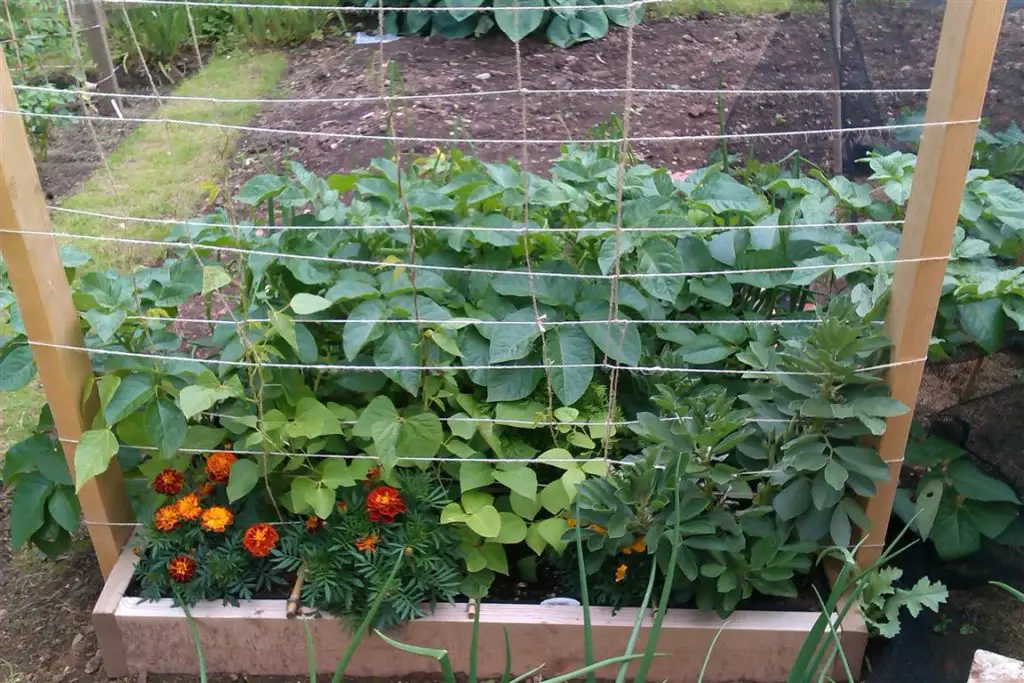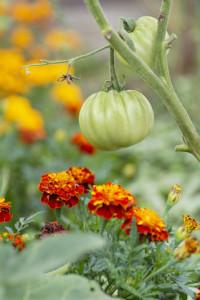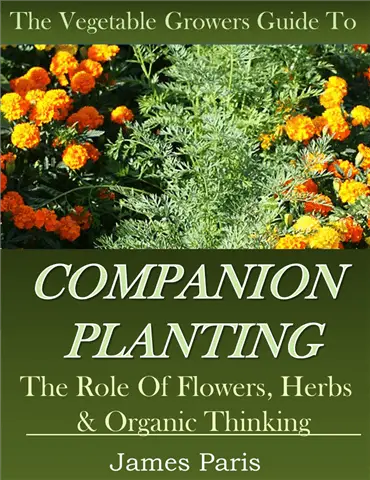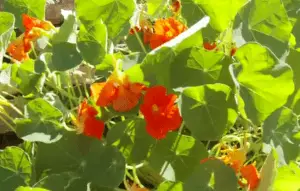How Do Vegetables Benefit From Companion Planting
Do vegetables need companions? This selection of companion planting for the vegetable garden shows how vegetables benefit from having good companions – just like us!
The fact is that just like us; vegetables and other plants tend to prosper better if they have companions to lean on 🙂
This could be taken literally, in that beans can be grown up corn stalks, for mutual benefit; the bean gets support, while the corn gets the nitrogen that the bean fixes into the soil – a truly win-win situation.
That is just one reason why every gardener should consider companion planting, if they want to maximise production, keep pests at bay and keep their plants happy and healthy.
Companion growing should be used as an overall organic growing plan, that helps to minimise or stop completely, the use of chemical fertilizers and bug sprays; and produce a healthy nutritional vegetable that is not filled with potential health problems – either now or in the future!

One of the best ways to operate a companion system – in my opinion – is by utilising a raised bed garden. This gardening technique has all the advantages in that it is easy to maintain, the crops are easy to harvest, it’s easier to keep bugs at bay, it requires littel or nothing in the way of fertilizer as it is self-sustaining.
These and many more advantages make gardening with a used bed system more productive and less work than conventional gardening. Check out these ‘Ten Good Reasons For Growing Plants in A Raised Bed‘ if you doubt me 🙂
Sustainable planting Method?
There are many different aspects to sustainable gardening; but the basic premise is to get into a gardening regime that is sustainable in the long run – and reduces any damage we do to the planet through pure waste, or the use of chemicals of one sort or another.
Growing the right sort of plants as companions for each other, reduces the need for fertilizers and chemical bug sprays if done properly. Making our own compost by using material that may have otherwise gone to the landfill, is another environmentally friendly way of ‘going organic.’
Companion Plants:
Marigolds make good companions for many plants, such as tomatoes and cucumber; because they flowers attract hover flies whose larvae will eat any aphids on these plants.
Growing marigolds alongside carrots can also help with carrot fly, as the smell of the flower confuses the fly.
Nasturtium is good ‘martyr’ plant to grow around your vegetables, as it will attract aphids and beetles to itself rather than have them feast on your prize vegetables.
Oregano is also a good all-round pest deterrent.
Peas and beans add much needed nitrogen to the plot, which is a nutritional requirement for most vegetables.
List Of Good Companions For Garden Vegetables
Carrots:
Good companions include, beans, peas, onions, lettuce, tomato, radish.
Including chives in the area will improve flavour and growth, while onions or leeks will distract the carrot fly by masking the scent of the carrots; as will sage or rosemary.
Celery:
Bean, tomato and cabbage family make good companions for celery.
Nasturtium, chives and garlic deters aphids and other bugs.
Corn:
Good companions are Potato, pumpkin, squash, tomato and cucumber.
French marigold deters beetles and attracts aphids from tomatoes.
Cucumber:
Good companions include, cabbage, beans, cucumber, radish, tomato.
Marigold and Nasturtium are good for attracting to themselves, aphids and beetles. Oregano is a good all round pest deterrent.
Radish:
Companions are carrot, cucumber, bean, pea, melon.
Nasturtium planted around is generally accepted to improve growth and flavour.
Squash:
Companions include melon, pumpkin, squash and tomato; while nasturtium and marigold; along with oregano, helps protect against bugs and beetles.
Strawberry:
Good companions include bean, lettuce, onion and spinach.
Planting thyme around the border deters worms, while borage strengthens general resistance to disease.
Tomatoes:
Good companion plants for tomatoes include; celery, cucumber, asparagus, parsley, pepper and carrot.
Basil and dwarf marigold deter flies and aphids; mint can improve health and all round flavour.
Three Sisters Planting:
This is one of the most well known examples of companion planting vegetables, and usually involves corn, beans and squash.
The Three Sisters is indeed an ancient gardening method used by the American Indians who regarded the technique as a ‘gift from the gods’ owing to the effectiveness of this companion planting method.
is indeed an ancient gardening method used by the American Indians who regarded the technique as a ‘gift from the gods’ owing to the effectiveness of this companion planting method.
What is The Three Sisters Method Of Planting
- Strong corn plants support climbing beans
- The beans or peas infuse much-needed nitrogen directly from the air and into the soil
- Climbing squash plants grow up the beans and their intertwining strengthens the beans plants against strong winds
- The broad leaves of the squash plants shade the soil keeping it both cool and moist as well as preventing the growth of weeds
Thus we can see that the Three Sisters method goes hand-in-hand with the concept behind Companion Planting and growing vegetables in an organic sustainable way.



